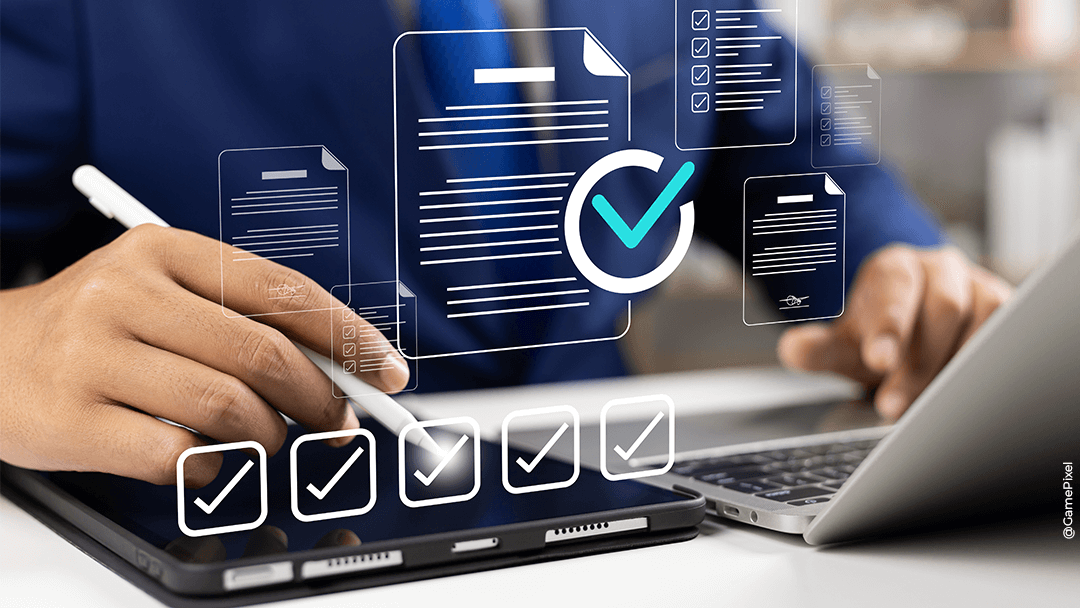Learn how to secure your corporate data with best practices and protection tools to avoid cyber threats and data loss.
In a world where digital technology reigns supreme, every online interaction can open up new opportunities, while also exposing us to considerable risks. Data security has never been so crucial. Just imagine: your most strategic information, the lifeblood of your business, ends up in the wrong hands. What would happen? Substantial financial losses, irreversible damage to your reputation, and the confidence of your customers.
As cyber threats continue to grow, affecting large companies and smaller structures alike, it’s imperative to take action. In this article, we take an in-depth look at data security. You’ll discover why it’s essential for your business, what the dramatic consequences of a data breach are, and above all, what best practices and tools are available to effectively protect your sensitive information. Get ready, the journey to data security starts now!
What exactly is data security?
Data security refers to the set of measures and practices implemented to protect sensitive information from unauthorized access, corruption or loss. This includes the protection of data stored on local systems or in the cloud, as well as data in transit, such as that sent by email or transferred between devices.
Data security is based on several pillars, including :
- Confidentiality: Only authorized persons can access data.
- Integrity: Data must not be altered without authorization.
- Availability: Data must be accessible to authorized users when they need it.
In a world where information circulates at incredible speed, it’s imperative to guarantee its protection. Whether you’re a small business or a large corporation, data security is an issue that deserves your full attention.
Why is data security important for your business?
Data protection is not just a matter for large companies. Small and medium-sized enterprises (SMEs) are also prime targets for cybercriminals, often due to the poor security of their systems. According to a recent study, almost 43% of cyberattacks target SMEs, as they are perceived as easy targets.
Securing data is not just a technological challenge; it’s a strategic issue that can determine the future of your business. What are the consequences of a data breach?
The consequences of a data breach
The consequences of a data breach can be devastating, affecting many aspects of the business:
1. Financial costs
Data breaches can be expensive. According to an IBM study, the average cost of a data breach is $4.35 million. This figure includes not only the direct costs of data recovery, but also the costs associated with incident management, regulatory sanctions, and loss of customers. By securing your data, you can significantly reduce these financial risks.
2. Impact on reputation
Trust is one of a company’s most valuable assets. In the event of a data breach, you risk not only losing customers, but also seeing your reputation tarnished. A KPMG study revealed that 86% of consumers are concerned about the protection of their personal data. By demonstrating that you are taking steps to secure sensitive information, you boost your customers’ confidence. According to another Kaspersky report, almost 30% of consumers switch providers after a data breach.
3. Legal implications
Companies are subject to various data protection regulations, such as the RGPD (General Data Protection Regulation) in Europe or the CCPA (California Consumer Privacy Act) in the United States. Failure to comply with these regulations can result in considerable fines and legal sanctions. By securing your data, you ensure that you comply with legal requirements.

The main threats to data
To secure your data, it’s essential to understand the threats it faces. Here are the main ones:
Theft of sensitive data
Data theft is one of the most common threats. Cybercriminals can infiltrate your systems to steal personal, financial or strategic information. This data can then be resold or used to commit further fraud.
Malware and ransomware
Malware is malicious software designed to cause damage to your systems. Ransomware, a type of malware, encrypts your data and demands payment to decrypt it. Ransomware cost businesses over $20 billion in 2021.
Phishing and social engineering
Phishing involves tricking users into revealing sensitive information, often through emails or fake websites. Cybercriminals often use social engineering techniques to manipulate employees into accessing sensitive information.
Internal threats
Internal threats can come from malicious employees or negligent collaborators. Even without malicious intent, an employee can inadvertently compromise data security by neglecting security protocols.
Best practices for securing your data
To effectively protect your sensitive information, it’s essential to implement robust security practices. Here are the best strategies to adopt.
Implement strict security policies
Develop clear security policies that define who has access to what information and under what conditions. Limit access to sensitive data to only those employees who really need it. Make sure every employee is aware of good IT security practices.
Encrypt sensitive data
Data encryption is a crucial step in ensuring that even if information is intercepted, it remains unreadable without the appropriate decryption key. Encryption must apply to data stored on servers and to data in transit, such as e-mails and file transfers.
Back up data regularly
Regular backups are essential to prevent data loss in the event of cyber-attack, hardware failure or human error. Make sure your backups are stored in secure locations and tested regularly to guarantee their effectiveness.
Train your employees
Training your employees in good security practices is crucial. A well-informed employee is your first line of defense against cyber threats. Organize regular security awareness sessions to keep your teams up to date on the latest threats and best practices.
Tools for securing your data
There are many tools you can use to strengthen the security of your data. Here are a few essential solutions you can implement.
Identity and access management (IAM) solutions
Identity Access Management (IAM) solutions control access to sensitive information. They ensure that only authorized users can access certain resources by implementing authorization levels, multi-factor authentication (MFA) and password management.
Endpoint security software
Endpoints (computers, smartphones, tablets) are often the first port of entry for cyberattacks. Endpoint security software, such as antivirus and intrusion detection systems, help protect these devices against malware, ransomware and other threats.
Tools for protecting data in transit
Data-in-transit protection tools such as Virtual Private Networks (VPNs) and SSL/TLS encryption protocols ensure that data sent via the Internet or internal networks is protected from interception.
Backup and recovery solutions
Investing in backup and recovery solutions is crucial to ensuring business continuity in the event of data loss. Choose tools that offer secure, automated backup options, enabling rapid restoration of data in the event of a breach or loss.

What to do in the event of a data breach
Despite all precautions, a data breach can still occur. In this case, it’s crucial to act quickly and effectively to minimize the damage. Here are the steps to follow:
1. Situation assessment
As soon as you suspect a data breach, it’s imperative to assess the situation. Identify the nature and extent of the breach. What data has been compromised? How many people are affected? This will help you determine the appropriate response.
2. Contain the violation
The first step is to limit the impact of the breach. This may involve taking affected systems offline, changing passwords or disabling compromised accounts. Act quickly to prevent further unauthorized access.
3. Notify the parties concerned
If personal data has been compromised, it is often necessary to notify those affected within a prescribed timeframe. Inform them of the measures taken to resolve the problem, and the steps they can take to protect their information.
4. Inform the relevant authorities
In many countries, legislation requires companies to report data breaches to regulatory bodies. Find out what your legal obligations are, and make sure you meet the notification deadlines.
5. Analyze the cause and learn from it
After dealing with the immediate situation, carry out an in-depth analysis of the incident to understand how it could have happened. What security holes were exploited? What lessons can be learned to strengthen security in the future?
6. Enhancing safety
Finally, use the information gained from analyzing the incident to improve your security practices. This may involve updating your policies, investing in new technologies or organizing additional training for your employees.
Qim info helps you protect your company's data
Data security is an absolute necessity in today’s digital world. As cyber threats continue to evolve and multiply, it’s your responsibility to protect the sensitive information that lies at the heart of your business. By applying best practices and investing in the right tools, you can minimize risks and ensure the long-term future of your business.
Remember that data security is not a one-off effort, but an ongoing process that requires vigilance and adaptation to new threats. Stay informed and protect what matters most: your sensitive information.







